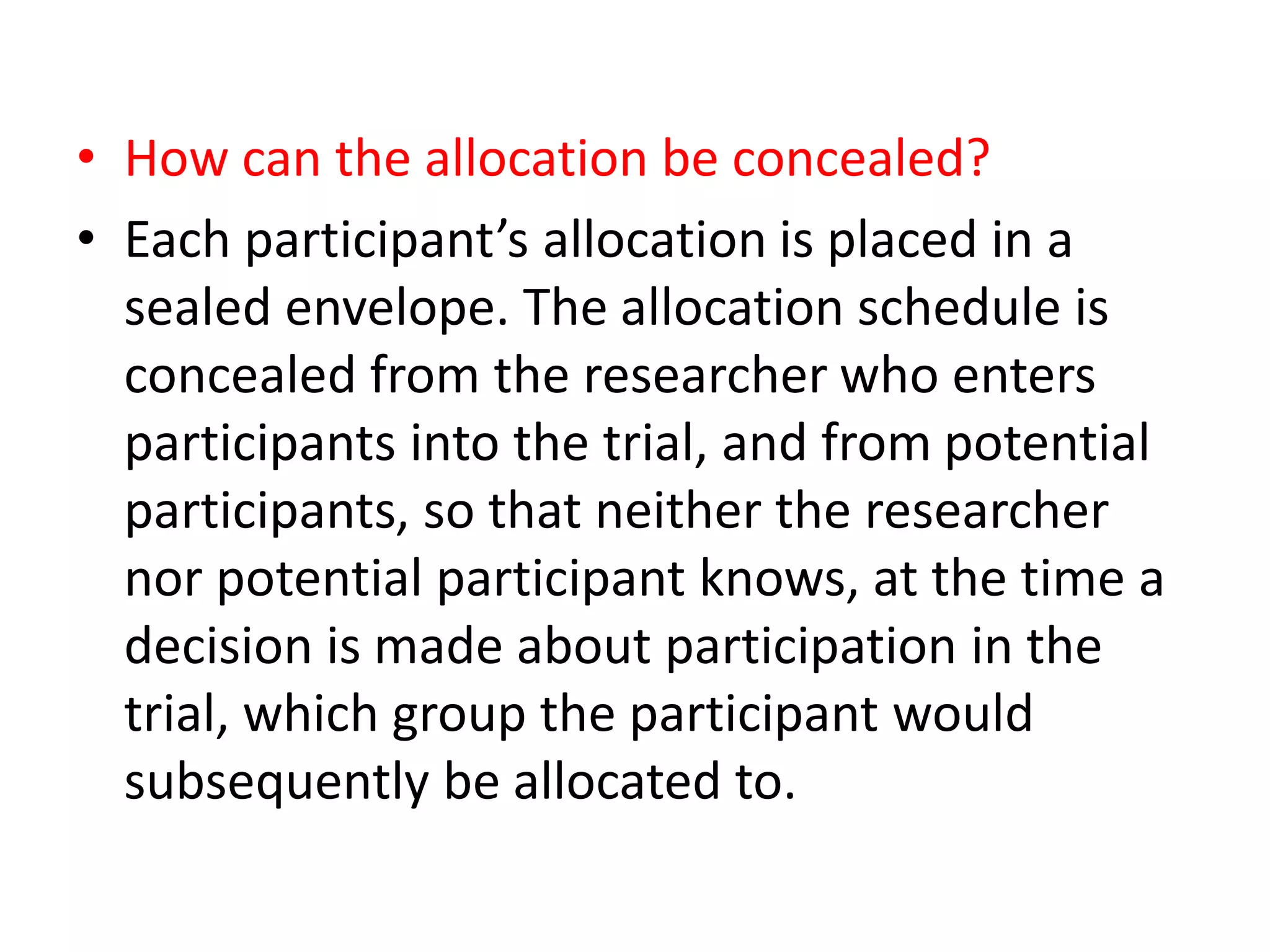This document discusses key criteria for evaluating the quality of evidence from randomized trials:
1) Groups must be comparable, which randomization aims to ensure by distributing participants evenly across groups through chance alone. Randomization can be computer-generated or through processes like coin tossing.
2) Allocation must be concealed so researchers are unaware which group a participant will be in to prevent bias. This is usually done through sealed envelopes or an off-site registry.
3) Follow-up must be complete or near-complete to prevent bias from non-random dropout patterns between groups. Less than 15% total dropout is ideal, with concerns rising above 20% where groups differ substantially.










































